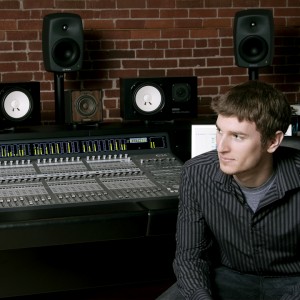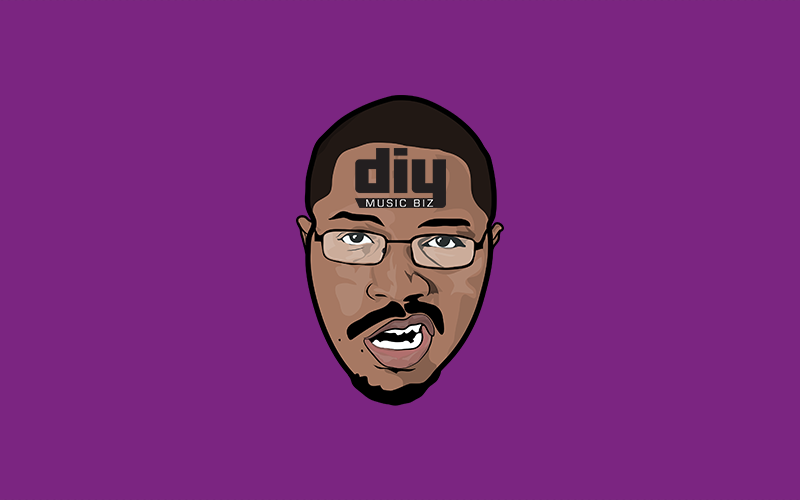Jeff, I wanted to thank you for taking time out of your busy schedule to partake in this interview. I feel it will help a lot audio enthusiast out there who are contemplating jumping into the field.
Can you please start by telling everyone a little bit about yourself and what you do?
 My name is Jeff Moberg – I am a 23 year old freelance Audio Engineer, Sound Designer, Composer, and Mixer, based in Toronto, Canada. I work at Syndicate Sound as the in-house Audio Engineer, and also have my own audio company called JM Sound+Music where I write music and design sound for commercials and other forms of media.
My name is Jeff Moberg – I am a 23 year old freelance Audio Engineer, Sound Designer, Composer, and Mixer, based in Toronto, Canada. I work at Syndicate Sound as the in-house Audio Engineer, and also have my own audio company called JM Sound+Music where I write music and design sound for commercials and other forms of media.
In the past I have worked with clients such as Sapporo Beer, UBISOFT, Coca-Cola, NHLPA, Discovery Channel, TD Bank, and more.
1. How did get your start? What made you want to be a sound designer/audio engineer?
I actually kind of fell into it.. haha, I’ve always been writing music and playing instruments and originally I wanted to make a living recording music. During my training at The Audio Recording Academy in Ottawa, there was a portion of the curriculum that was all about Audio Post Production for film and it really caught my attention.
It was then that I knew I wanted to get into Audio Post. So I moved to Toronto to train at Humber College and upon graduation, I became an intern at Syndicate. After a year of interning I was hired on and have been there ever since – constantly learning. Now I have started JM Sound+Music and have more freelance work coming in as well.
2. How Do you work – what’s your process from start to finish(as a sound designer)?
Usually when I first get signed on for a project, I am sent a rough cut. After watching the rough cut and hearing what role the sound will play from the client, I go out and record every sound that comes to mind that I may need for the project. After that I sift through the recorded audio and start cutting to the video and creating the sounds I envisioned.
A rule I always use when designing audio is to create what makes sense for the video, then think of ways to tweak the sounds or layer them create something that will be more engaging for the viewer – something different that would really tell a story or bring a fresh element to the project.
3. How do you go about finding projects (are you contacted or are you in control of product creation
Most of the projects I worked on are ones I am contacted for. That being said, I am always looking for projects, or collaborations. As many freelancers will testify – the freelance life is either feast or famine.. you are either going to be REALLY busy at times, or there will be no work at all.
If there are no projects on the go, I am looking for leads, shooting or creating videos to sound design and building my portfolio myself, or posting on my blog to help advertise/promote JM Sound+Music. The goal is to be constantly busy.
4. What’s the most stressful part of being a sound designer/engineer?
Since audio is usually the last stage in making a video or a show, there are tight deadlines because there may be many delays in production, and the editing process – but the deadline stays the same. This often leads to long nights at the studio to finish jobs. Also with being an engineer, you are dealing with technology.. and technology doesn’t always like to work properly.
There is nothing more stressful than your DAW freezing up or your go-to piece of gear deciding to take a day off while in the middle of a session with clients in the room. Being an Audio Engineer you have to be quick to fix these issues that pop up.
5. What is your go to gear/plugins/mics for getting the job done
In the studio, I love using either the Neumann U87, or the AKG 414 – those running through an API 7600 channel strip sound great for voice-over recording!I always have my Zoom H4n with me to record on the go. The stereo width is fantastic and being able to record in 96khz/24bit resolution is great for being able to pitch shift, or play with the audio when designing sounds. In fact I used this portable recorder to record my sound effects library called “SHIFT”.
With plug-ins, it really depends on the project.. but the ones I find myself using over and over again include the C4 Multiband Compressor, various EQ’s, and the Fairchild 660 tube compressor. If there is any noise reduction needed for dialog I like to use the Waves Noise Suppressor, I find it gets the job done without really mangling the audio. For sound design I really enjoy the Sound Toys bundle.. some really great plug-ins with endless amounts of tweaking capabilities.
6. What advice would you give to those looking to dabble into sound design?
My advice would be to find someone in the industry to help out or assist. I’ve only been working professionally in this industry for 3 years.. and I have NEVER stopped learning from those around me. Don’t be afraid to experiment – Pick up some gear or plug-ins that really let you play with audio and create something!
Learn the tools inside and out so that you will be able to create what you want to hear. 7. Any mobile setup configs you’d suggest for those with a budget of $1,500 and under? Mobile eh.. Well I would highly recommend a portable recorder of some sort (Zoom H4n, or a Sony PCM are always good options).
A computer with a DAW you are most comfortable working with. A sound design plug-in pack like Sound Toys to tweak different sounds or audio you record. Oh and a good set of studio monitors (KRK has a good line of low budget monitors that have a really decent sound quality)
8. Do you need to go to school for this profession (why or why not)
This is a question I have been asked many times.. and it is really a tough question to answer. Some people feel that schooling doesn’t prepare you well enough for the real world, while others say that it’s essential. For me personally, I wouldn’t be where I am today if I hadn’t gone to school and learned the basics of a recording studio, and also the science of how sound actually works.
A big part of designing sound is to know how to manipulate frequencies. Same with mixing – it’s all about knowing how to properly place each audio element into the mix so that the viewer can clearly hear everything while maintaining a natural sound. Schooling is also a great way to get the credentials that will get you in the door of a professional studio, which is really tough.
A lot of Audio Post Production programs also teach a student the other elements that go into the post process, and it’s really good to know how audio post fits in a full production and post production schedule.
9.) How should someone who’s new go about putting themselves out there and finding work? What should a Demo consist of? How long should the demo reel be (roughly)
Create some online pages where you can post your recent projects. Facebook, Vimeo, a blog, Twitter – get them going and get your name out there! The one thing that will get you work is for people to hear what your work sounds like, or what you can do. A sound design reel should be roughly 1-2 minutes, and with any other type of demo reel, it should display your best work.
I’ve also seen it where a sound designer will pick one extremely well-done piece and make it their demo. Another important thing is to go to conferences or industry parties and meet people who work in the industry.
10) what’s the difference between a sound designer and an audio engineer?
An Audio Engineer usually works in a studio where they run sessions recording music, voice-overs, foley, etc, and usually is responsible for editing and mixing. A sound designer is exactly how it sounds, a person who designs sounds – This can be for anything from branding a company’s logo (the famous Intel logo.. or THX, or 20th Century Fox), or designing the sound of the alien space-craft from the next big Sci-Fi movie.
11. Do you have any last tips for those looking to dive into the world of sound design?
Surround yourself with creative professionals and learn from them. Always keep busy and find new ways to use the tools you are working with. Some of the most creative things come from trial and error. Don’t be afraid to ask questions or contact local studios and try to volunteer somewhere to get your hands dirty and get a feel for the industry.
What’s the best way for people to contact you about your services?
The best way to contact me directly is through email –
jmoberg@gmail.com
Also through my website/blog jeffmoberg.tumblr.com
There you can read about my latest projects, sound effects libraries, music, sound design experiments, my past work, my services, and how to contact me.



Awesome interview!
Thanks Edward, I’m glad you enjoyed it. I’ll let you know as soon as I post more!
Great interview. This really answered a lot of my questions I had concerning school and freelancing. I think the best advice in this interview was when he said to always stay busy. That’s great because it’s so easy to fall off and get lazy when you have no “real” boss.
Thanks MizzHitz,
Be sure to ask any questions if they later arise
Great interview Greg, keep em coming!
Will do Stewart, right now I’m working on a podcast
Love the interview, but I have a question… what is that thing he has on the top of the recorder?
Hi Adam,
I’m glad you enjoyed the interview (more to come soon). That “thing” is called a fury head/deadkitten/wind cutter. There are a lot of names for it, it’s basically a wind shielding device to block wind.